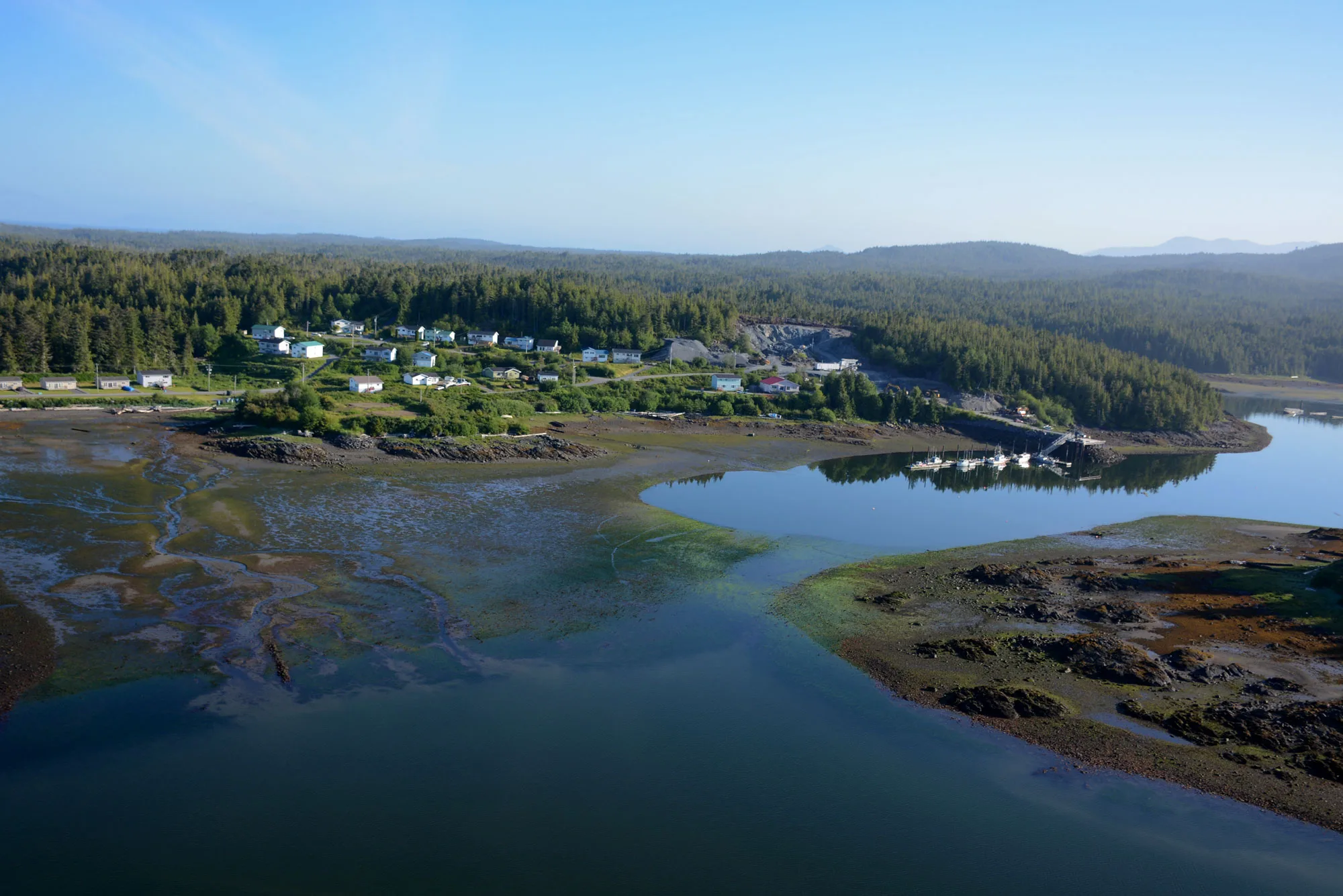Benefits to the Metlakatla First Nation and its Membership
Reputation
Metlakatla First Nation has been widely recognized as leaders in the area of cumulative effects management and the CEM Program itself has been acclaimed as an innovative, first of its kind, Indigenous-led CEM initiative in BC and Canada. Since 2014, several groups have reached out to Metlakatla to learn about the program and Metlakatla’s experience tackling CEM in its territory. More specifically, Metlakatla has offered guidance in cumulative effects exchanges with the World Wildlife Fund, Environment Canada and Climate Change, BC Ministry of Forests, Lands, Natural Resource Operations and Rural Development, BC’s Environmental Stewardship Initiative, BC Hydro, Other First Nations and Cumulative Effects Academics.
Leveraging CEM Results
A major component of the Metlakatla CEM Program is data collection, both socio-economic data through the Metlakatla Membership Census and intertidal clam data through the Metlakatla Clam Surveys. Having access to its own data collection methods and data has allowed Metlakatla to leverage CEM results in environmental assessment processes and treaty negotiations. For example, off-reserve housing was included as a valued component in the Aurora LNG project review application as a direct result of Metlakatla Census housing data. Metlakatla was able to show the proponent that core housing need was a significant issue for Metlakatla households in Prince Rupert.
Capacity Building
The Metlakatla CEM Program has hired more than 20 Metlakatla community members in various roles since 2014. The CEM Program has also led to several large funding agreements with the provincial and federal government, including the federal Oceans Protection Plan Baseline Fund, BC’s Environmental Stewardship Initiative Restoration Fund, and funding from CIRNAC’s Indigenous Centre of Expertise on Cumulative Effects Management. These funding opportunities have resulted in long-term staff hires for the Metlakatla Stewardship Society that has allowed Metlakatla to increase their internal capacity. In order to sustain a Metlakatla-led program, we are committed to hiring Metlakatla members in both full-time and part-time staff positions.
Metlakatla-Specific Data Collection
Good baseline information helps Metlakatla managers make good decisions because we cannot manage what we don’t know. When it comes to available data on important values, Metlakatla has typically had to rely on existing data systems such as the Canadian Census and DFO catch monitoring programs. These systems are rarely built in ways that can support Metlakatla-specific data needs. The Metlakatla Membership Census and the Metlakatla Clam Monitoring Program are specifically developed to meet the unique needs, interests and values of the Metlakatla community. As a result, Metlakatla now has 5 years of Metlakatla-specific socio-economic data and intertidal clam data for multiple Metlakatla beaches.
Raising the Bar on Resource Management
Since the Metlakatla CEM Program was first developed in 2014, we have seen several regional and provincial cumulative effects initiatives on BC’s North Coast. Many of these initiatives have looked to the Metlakatla CEM Program for guidance, which results in better resource management at the regional level and indirectly benefits Metlakatla.
Ongoing Challenges and Our Response
Community Buy-in is Slow but Necessary
Fortunately, Metlakatla leadership strongly supported CEM from the beginning. However, due to being inherently complex it is challenging to engage community members in a comprehensive discussion about CEM from year to year. We’ve enjoyed greater success engaging people in aspects of CEM such as the Metlakatla Census, a specific value they may be interested in, or linking a CEM value to an actual project currently underway. We use a range of engagement methods to meet community members where they are. And each year, we see more and more participation and involvement from the community on CEM activities. Community members keep us accountable. They make sure the program and its activities are supporting their needs and goals. We often revisit and revise the direction of our research based on community feedback.
Dependence on SFU Researchers and External Consultants
Graduate students are an invaluable resource to the CEM Program; however, it is equally important and sometimes challenging to build the internal capacity within Metlakatla to carry on the CEM work. We are in the process of identifying, hiring and training individual Metlakatla members that can be mentored over the next few years to take on the long-term management of the CEM Program.
Extending Metlakatla CEM at a Regional Scale
The Metlakatla CEM Program is rooted in Metlakatla values and these values may not be shared or identified as priorities by other First Nations or governments working within the region. Sharing results of specific values is not a realistic expectation. However, we’ve enjoyed success sharing methods with regional initiatives believing broader understanding of CEM will improve overall decision making in the region to support Metlakatla goals.
Concerns about Data Sharing and Confidentiality
CEM information and data has been used in many areas supporting Metlakatla’s work, but we have not yet fully integrated our data into processes that interact with external agencies such as the environmental assessment process. A proponent having access to Metlakatla’s census data and understanding the trend of Metlakatla’s key values should lead to more suitable project mitigations. However, much of the CEM data has not been shared with external parties due to legitimate concerns around data sharing and confidentiality. We are working on a data management plan to be able to share data securely with consistent guidelines.
